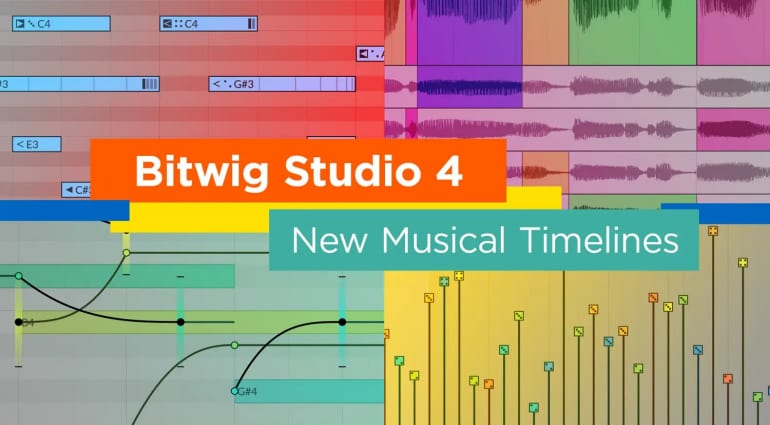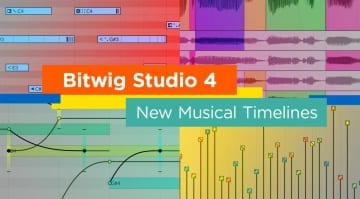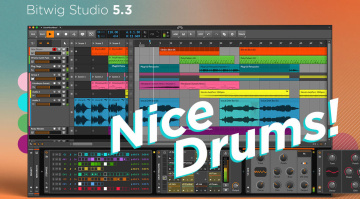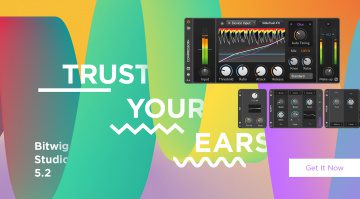Bitwig Studio 4: huge update brings audio comping, operators, M1 support and more
Bitwig Studio reaches version 4 with a huge update. Highlights include comping for audio clips, a new set of Operators, Expression Spread, and native Apple Silicon support on Mac (with Intel and ARM plug-ins working side-by-side) – among other good stuff. Here’s the gist:
Bitwig Studio version 4
Audio comping in Bitwig is enabled both in Clip Launcher and Arrangement views. In the company’s own words:
Each take is given its own color so from the first swipe of a take lane, the sources are clear. To swap in a different take, just tap it. Then press the up or down arrow to cycle thru the other takes. From the composite lane, move a boundary by clicking, adjust gain by dragging, or fix timing by sliding. Since we have a Launcher and an Arranger, comping lives inside the audio clip. So if you are composing in the Launcher, just click to enable comp recording right there. Or just drag clips in either direction with your takes safely inside. Even open the layered editor when multiple comps belong together. Comping works wherever you are, now and later. And since all good techniques deserve a new trick, right-click any audio clip to Fold To Takes. If you ask for an eight-bar comp, the entire clip will be spooled into take lanes, and the comping can begin. Or just drag audio in to add a new take lane.
While Modulators have been a Bitwig centerpiece all along, Bitwig Studio version 4 brings Operators to program sequenced note and audio events. Operators include four modes, which can be used individually or in any combination:
- Chance makes each event more or less likely.
- Repeats allow each event to retrigger at a set rate, or just divide the note length into any number of pieces.
- Occurrence sets conditions for each event.
- Recurrence thinks of each event as its own looping timeline.
Bitwig’s engine allows expression automation for notes and audio. Version 4 has visualized Expression Spread range to any expression point. You can give note velocities randomization, but you can also give each piece of a chord its own panning. Or, create a note that starts in tune and then drifts to a random pitch. With the editor open, all destined random values are visualized when the clip starts. And then again, the new values appear when the next loop cycle begins. You can even cast the dice yourself by clicking the Seed field of any clip.
The new Bitwig Studio version 4 runs natively on Apple Silicon. Furthermore, Intel and ARM VSTs can live alongside each other in the same project. Additionally, Bitwig Studio 4 is now localized in Chinese, Japanese, and German. Functions, labels, and in-app documentation can be displayed in any of these languages. There are also improved export options with lossless formats (WAV & FLAC), lossy options (OGG & MP3), and a new contender (OPUS).
On the import side, you can now import data from FL Studio (FLP) and Ableton Live (ALS) project files. If you are coming from Auxy, you can now export your work directly as a Bitwig Studio project. That aside, content sliding (and gain handles for audio) are available directly at the clip and event level. Waveforms are now shown in a Perceptual scale (you can switch back to Linear in the Dashboard) and most of the Grid and Polymer filters have a smoother response for extreme resonance and modulation cases.
Availability
Bitwig Studio Version 4 is available for download as of today. Everyone with an active Bitwig Studio Upgrade Plan has access and is able to download the installer from their account. All new features except comping are also part of Bitwig Studio 16-Track and 8-Track.
(Bitwig Studio yearly license – can be used for Version 4 too)
More information on Bitwig Studio Version 4
Bitwig Studio 4 Videos
You are currently viewing a placeholder content from YouTube. To access the actual content, click the button below. Please note that doing so will share data with third-party providers.
You are currently viewing a placeholder content from YouTube. To access the actual content, click the button below. Please note that doing so will share data with third-party providers.
You are currently viewing a placeholder content from YouTube. To access the actual content, click the button below. Please note that doing so will share data with third-party providers.
This post contains affiliate links and/or widgets. When you buy a product via our affiliate partner, we receive a small commission that helps support what we do. Don’t worry, you pay the same price. Thanks for your support!









